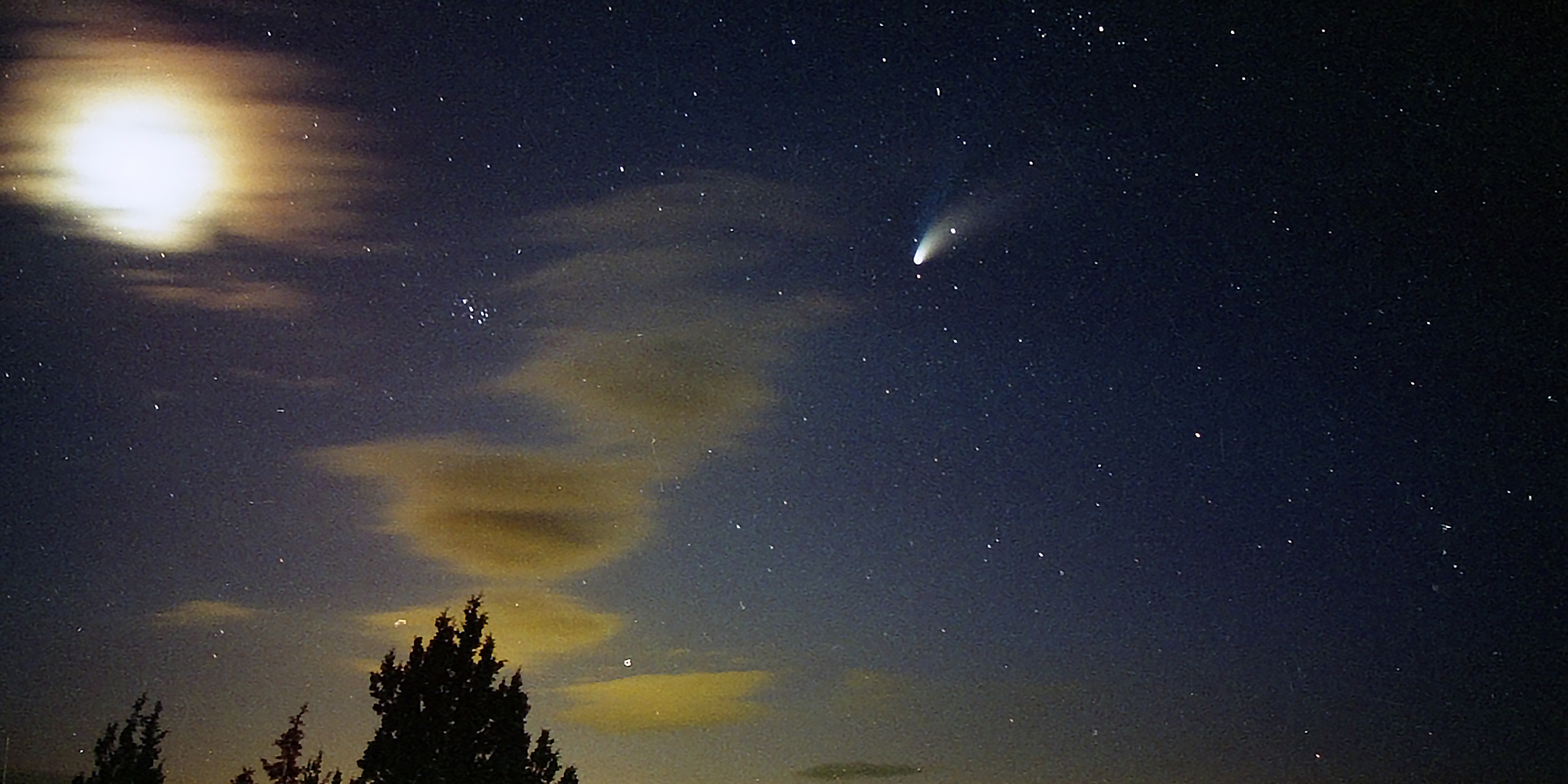Originally published 28 April 1997
Story 1: At the recent Ozark UFO Conference in Eureka Springs, Ark., participants pooh-poohed the idea that a UFO is following Comet Hale-Bopp. One conference-goer said of members of the Heaven’s Gate cult, “They were really weird.” Another said, “The whole Heaven’s Gate incident has made a conference like this the object of ridicule.”
Story 2: I live part of each year in Ireland on a hillside track known locally as “The Fairies’ Road.” Once, some years ago, my neighbor expressed a reluctance to walk the road at night, apprehensive of the little folk under the hill. I was not able to suppress a condescending smile. Later, I mentioned to this same person that our hill had once been covered by a thousand feet of glacial ice. Now it was her turn to smile. “It’s easier to believe in fairies under the hill than ice on top,” she said.
Story 3: A few years ago, an eye surgeon at a Dublin hospital became concerned about recurring infections in one of his patients. An investigation revealed that the source of germs was contaminated holy water, with which the patient repeatedly dabbed her eyes. A subsequent study showed non-sterile holy water to be a potentially significant source of infection in hospitals.
These stories have a common lesson: One person’s truth is another person’s superstition.
Scientists scoff at UFOs. UFO buffs scoff at Heaven’s Gate. Heaven’s Gaters scoff at science.
We all believe things that are on the face of it absurd. When I tell my introductory astronomy students that the entire known universe began 15 billion years ago as an infinitely small speck of hot energy, they roll their eyes as if I’m nuts.
Certainly, a Big Bang beginning for the universe is more foreign to our thinking than UFOs. The dance of DNA in every cell of our bodies stretches credulity more than magical properties of holy water. Ireland under ice is no less implausible than fairies. Many things that scientists believe are further removed from common sense than the outlandish concoctions of cultists.
So where does that leave us? Is truth relative? Do Unexplained Mysteries and X‑Files of prime-time TV have as much claim on our credulity as the science pages of the Boston Globe? Are the healing properties of holy water and antibiotics equally credible?
These are not easy questions to answer. Philosophers have debated criteria of truth since Day One, with no resolution. Still, it is possible to argue that science “works” in a way that other truth systems do not.
Consider Comet Hale-Bopp.
The comet was first observed by two amateur astronomers, Alan Hale and Thomas Bopp, in the summer of 1995. Within hours, they communicated their discovery to the scientific community through the International Astronomical Union’s Central Bureau in Cambridge. Soon, hundreds of other astronomers, professional and amateur, turned their telescopes to the comet’s reported position in the constellation Sagittarius and confirmed what Hale and Bopp had seen.
Now the great engine of scientific knowing turns its attention to the comet. Computers calculate the orbit from precise observations. Within days of the comet’s discovery, its spectacular visit to our skies in the spring of 1997 is confidently predicted.
Instruments on Earth and in space are trained on the comet and begin recording reams of data. The data are subjected to exhaustive — and exhausting — analysis. The size, dynamics, and composition of the comet are determined. Papers are written, annotated with references to other relevant work, and submitted to peer review by other scientists. Every observation, calculation and conclusion is carefully scrutinized.
The study of comet includes men and women of every nationality, religious faith and political persuasion. They work together in harmony — skeptically, but without mutual suspicion. Observation is paramount: What is seen? How is it to be interpreted so as to be consistent with what we already know? How might it be irreconcilably inconsistent? Is what we know in need of revision?
Science is a system of knowing — call it organized skepticism — that makes no claim for absolute truth, that is tolerant of modest inconsistencies, that tries as hard to prove that something isn’t so as to prove it true. It is a flawed human enterprise, but one whose practical success is manifest all around us in the astonishing achievements of technological civilization.
Physicist Heinz Pagels says: “The capacity to tolerate and welcome contradiction, not the need for simplicity and certainty, is the attribute of an explorer. Centuries ago, when some people suspended their search for absolute truth and began instead to ask how things worked, modern science was born. Curiously, it was by abandoning the search for absolute truth that science began to make progress, opening the material universe to human exploration. It was only by being provisional and open to change, even radical change, that scientific knowledge began to evolve. And ironically, its vulnerability to change is the source of its strength.”
Someday, 4,200 years hence, when Hale-Bopp again appears in our sky, as predicted, on schedule, we will have another seal of approval on the fact that science “works” — in a way other truth systems do not. The comet is not a portent, a millennial harbinger, or a vanguard for UFOs coming to carry us to a Higher Dimension; it is a big, dirty snowball in exact thrall to the gravity of the sun.



